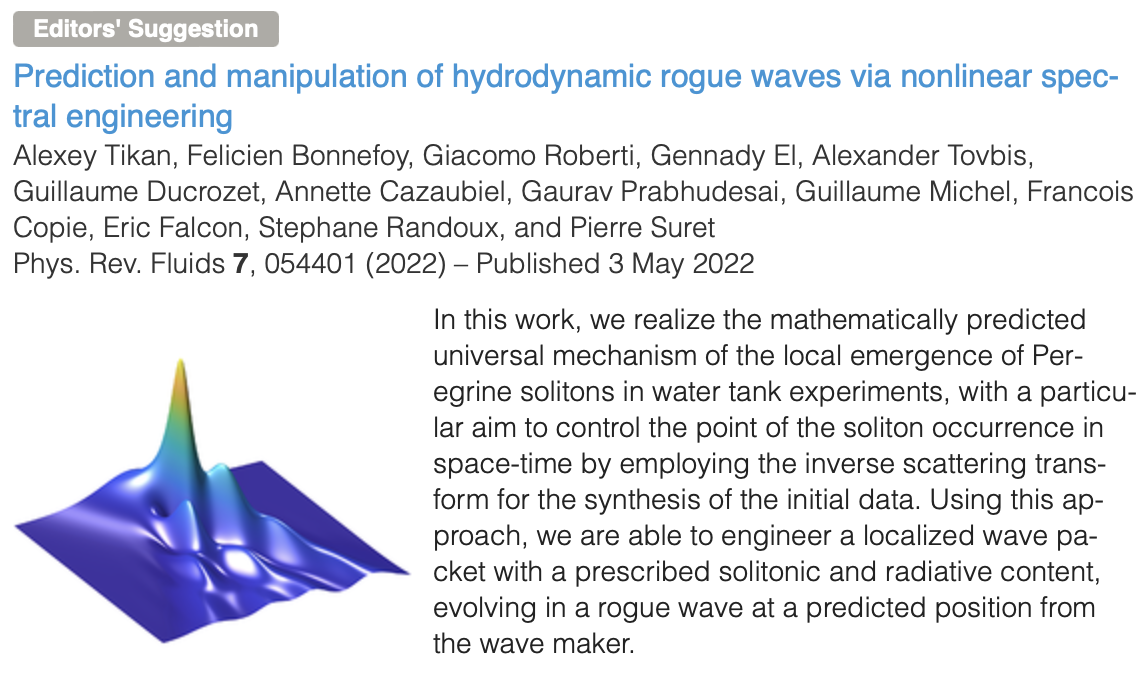URL: https://journals.aps.org/prfluids/abstract/10.1103/PhysRevFluids.7.054401
Abstract: Peregrine soliton
(PS) is widely regarded as a prototype nonlinear structure
capturing properties of rogue waves that emerge in the nonlinear
propagation of unidirectional wave trains. As an exact breather
solution of the one-dimensional focusing nonlinear Schr÷dinger
equation with nonzero boundary conditions, the PS can be viewed
as a soliton on finite background, i.e., nonlinear superposition
of a soliton and a monochromatic wave. A recent mathematical
work showed that both nonzero boundary conditions and solitonic
content are not pre-requisites for the PS occurrence. Instead,
it has been demonstrated that PS can emerge locally, as an
asymptotic structure arising from the propagation of an
arbitrary large decaying pulse, independently of its solitonic
content. This mathematical discovery has changed the widely
accepted paradigm of the solitonic nature of rogue waves by
enabling the PS to emerge from a partially radiative or even
completely solitonless initial data. In this work, we realize
the mathematically predicted universal mechanism of the local PS
emergence in a water tank experiment with a particular aim to
control the point of the PS occurrence in space-time by imposing
an appropriately chosen initial chirp. By employing the inverse
scattering transform for the synthesis of the initial data, we
are able to engineer a localized wave packet with a prescribed
solitonic and radiative content. This enabled us to control the
position of the emergence of the rogue wave by adjusting the
inverse scattering spectrum. The proposed method of the
nonlinear spectral engineering is found to be robust to
higher-order nonlinear effects inevitable in realistic wave
propagation conditions.
